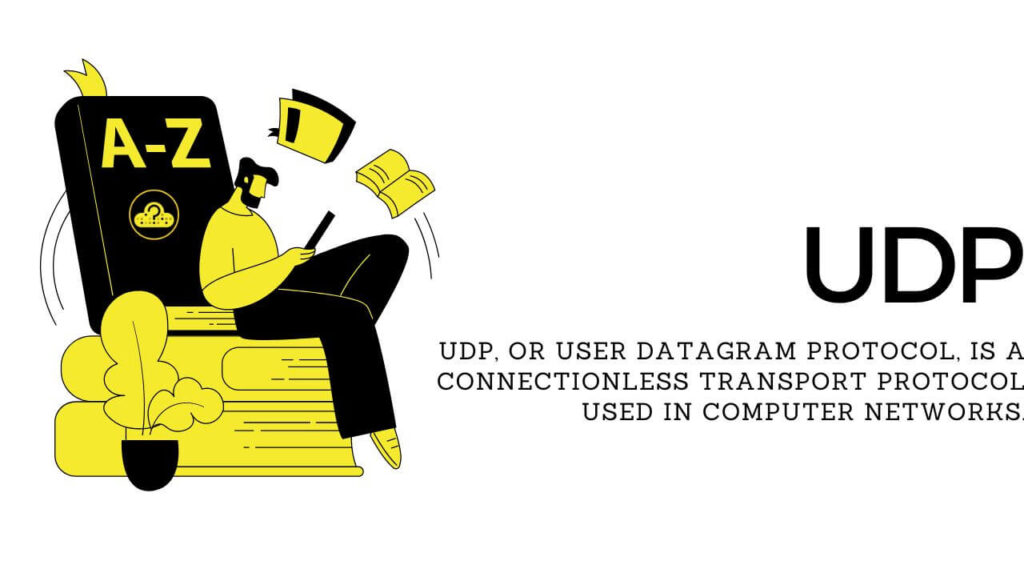What Is UDP (User Datagram Protocol)?
- Short Definition:
- UDP, or User Datagram Protocol, is a connectionless transport protocol used in computer networks. It provides a lightweight and efficient method for sending datagrams, or small packets of data, across an IP network. This protocol does not guarantee reliable delivery or ensure the order of packets, making it suitable for applications that prioritize speed and efficiency over reliability, such as real-time streaming, online gaming, and voice/video communication.
- Extended Definition:
-
User Datagram Protocol is a transport layer protocol that operates on top of the Internet Protocol (IP) within computer networks. It offers a simple and lightweight communication mechanism for sending datagrams between devices. Unlike TCP (Transmission Control Protocol), UDP is connectionless and does not establish a dedicated connection before transmitting data.
UDP provides a minimalistic, best-effort delivery service, meaning it does not guarantee reliable delivery, packet sequencing, or error correction. It is designed for applications that prioritize low latency and high-speed data transmission over guaranteed delivery and error-free communication. This makes UDP suitable for real-time applications such as voice and video streaming, online gaming, DNS (Domain Name System) queries, and broadcasting.
UDP datagrams consist of a header and payload. The header contains source and destination port numbers, along with a length and checksum field. The payload carries the application data, such as audio or video packets.
While this protocol lacks features for retransmission and flow control, its simplicity and low overhead make it more efficient in terms of bandwidth utilization and network resource consumption compared to TCP. However, applications utilizing UDP must handle any reliability and sequencing requirements at the application layer, as UDP does not provide built-in mechanisms for these functionalities.
In summary, UDP is a connectionless, lightweight transport protocol that offers fast and efficient communication for applications that prioritize speed and real-time data transmission over guaranteed delivery and reliability.
UDP and VPN
In the context of VPNs, using the User Datagram Protocol as the transport protocol can provide improved performance, especially for applications like VoIP (Voice over IP), video conferencing, or online gaming, where real-time communication and low latency are crucial. Its connectionless nature also reduces the overhead associated with establishing and maintaining a TCP connection.
However, it’s important to note that the protocol’s lack of built-in reliability mechanisms, such as error correction and retransmission, means that VPNs using UDP may be more susceptible to packet loss or potential data corruption. To mitigate this, VPN protocols built on UDP, such as OpenVPN or WireGuard, often include their own error detection and recovery mechanisms within the VPN protocol stack to ensure reliable transmission of data.

For more definitions, check out our dedicated Definitions List.
